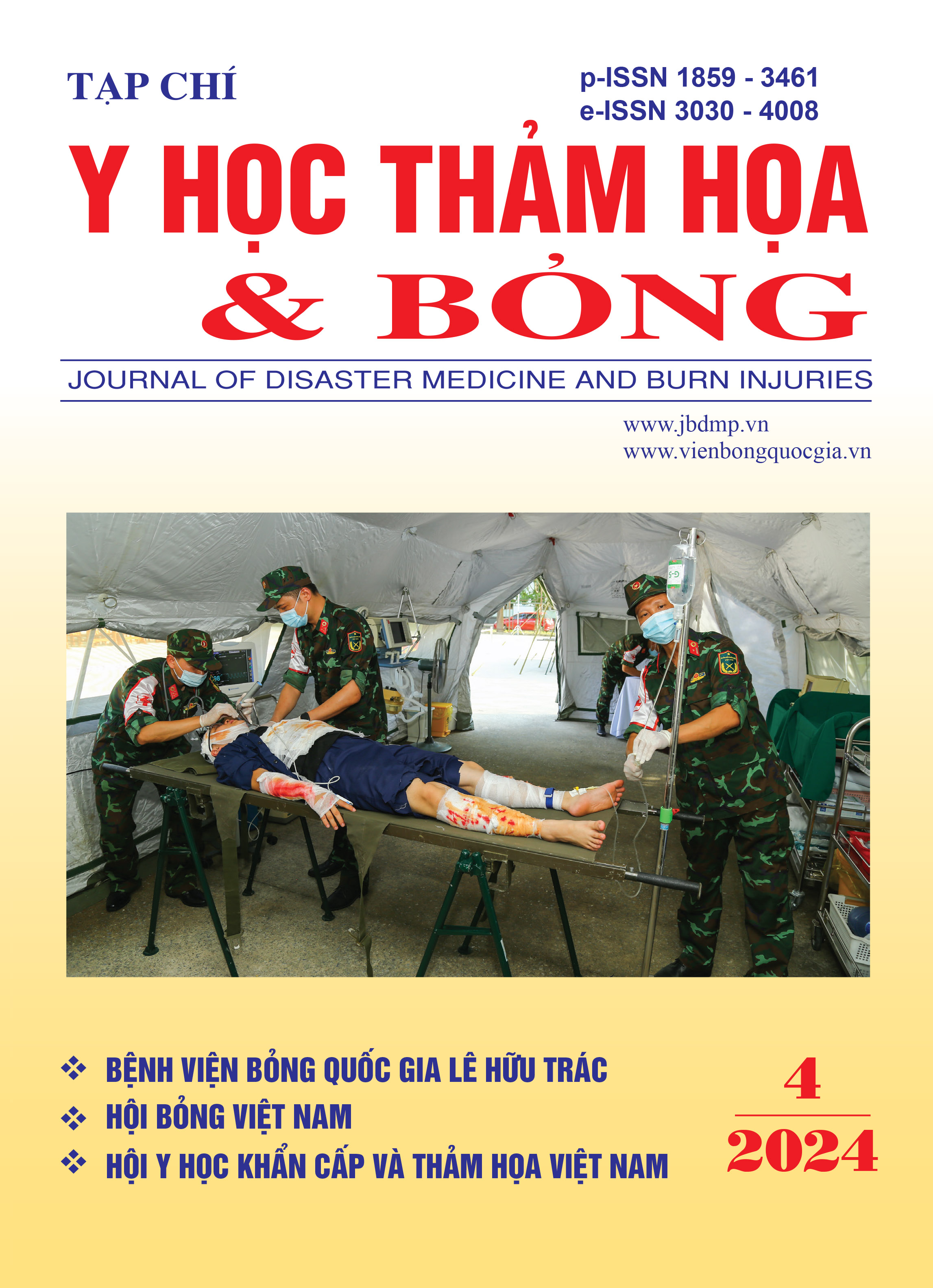Deep vein thrombosis at lower extremities in severe burn patient
Main Article Content
Abstract
Deep vein thrombosis (DVT) involves the development of blood clots within the deep veins, typically occurring in the lower extremities...The mechanism of DVT formation is due to the combination of 3 factors (called Virchow's triangle): stasis, hypercoagulability, and endothelial injury. Severe burn patients often have all three components of Virchow's triad. Hypercoagulability from increased fibrinogen, coagulation factors level and platelet count; stasis from prolonged immobilization and multiple surgical procedures; endothelial injury from the systemic inflammatory response and mechanical trauma from central venous catheters [2, 4].
We report a case of a 51% total body surface area (TBSA) burn patient who developed deep vein thrombosis on day 52.
Article Details
Keywords
Deep vein thrombosis, severe burn, risk factors
References
2. Bordeanu-Diaconescu, E. M., et al. (2024), "Venous Thromboembolism in Burn Patients: A 5-Year Retrospective Study", Medicina (Kaunas). 60(2).
3. Fecher, A. M., et al. (2004), "Analysis of deep vein thrombosis in burn patients", Burns. 30(6), pp. 591-3.
4. Liu, A., et al. (2021), "Venous Thromboembolism Chemoprophylaxis in Burn Patients: A Literature Review and Single-Institution Experience", J Burn Care Res. 42(1), pp. 18-22.
5. Meizoso, J. P., et al. (2015), "Hypercoagulability and venous thromboembolism in burn patients", Semin Thromb Hemost. 41(1), pp. 43-8.
6. Mullins, F., et al. (2013), "Thromboembolic complications in burn patients and associated risk factors", J Burn Care Res. 34(3), pp. 355-60.
7. Peng, H., et al. (2020), "Risk Assessment of Deep Venous Thrombosis and It's Influencing Factors in Burn Patients", J Burn Care Res. 41(1), pp. 113-120.


